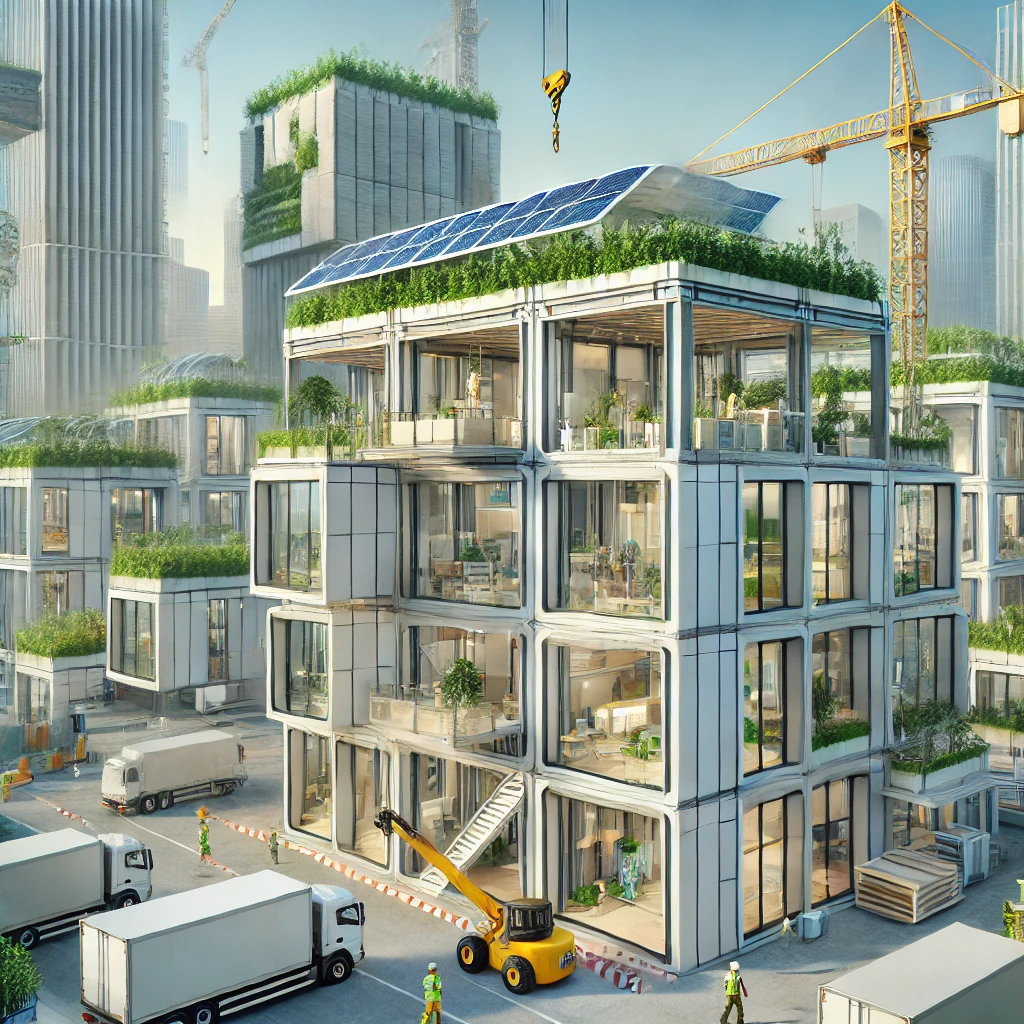Market report on modular construction systems 2024-2029 featuring profiles of Abtech, Butler Manufacturing, Modular Engineering, Niko Prefab Building Systems, United Partition Systems, EPACK Prefab, and others.

The market for prefabricated construction systems is expected to grow due to its advantages, including rapid construction, reduced labor costs, decreased workload, and the possibility of factory production. The main factors driving the development of the prefabricated construction systems market are the increasing demand from residential construction, the requirements of commercial properties, a growing interest in eco-friendly buildings, and the latest 3D construction technologies. In 2022, the gross value added in the construction sector of the European Union was 5.5%. The highest share among member states was recorded in Austria (7.3%), followed by Finland and Romania (both at 7%). Investments in residential construction accounted for 5.9% of the gross domestic product in 2022, with the largest investment volumes observed in Cyprus (8.6%), Germany (7.3%), Finland (7.2%), and France (7.1%).
From 2010 to 2022, the number of building permits for residential properties increased in 23 countries of the European Union. In Bulgaria, this figure rose almost fourfold, followed by Estonia and Malta with increases of 162% and 118%, respectively. According to the U.S. Census Bureau, the number of permits for new residential properties in 2022 was 20,182, while in 2023 it was 18,217.
The demand for residential real estate continues to grow on a global scale. This is driven by factors such as the development of economies in the Asia-Pacific region, the need for affordable housing for low-income individuals, and the rising property prices in urban areas. In Spain, the number of available apartments increased from 96,996 in 2022 to 98,040 in 2023, which is linked to the rising housing prices, especially in popular tourist destinations.
The increase in demand for residential real estate is leading to the necessity of using modular construction, which is quick and easy to implement. Modular buildings are cheaper and produce less waste compared to traditional construction.
Modular construction systems represent an optimal solution in the context of the environmental issues faced by the construction industry. Construction is a source of significant waste, as well as being responsible for considerable energy consumption and CO2 emissions. Typically, a large portion of the waste ends up in landfills, causing serious harm to the environment. At the same time, modular construction requires less energy to erect structures compared to traditional technologies, as energy-efficient technologies can be utilized in the manufacturing processes. The production of modular building elements takes place in controlled conditions, which allows for the optimization of material use and a reduction in waste volume.
The assembly process for such buildings is faster and requires less energy for transporting materials to construction sites. Additionally, they are designed with energy efficiency in mind: they include highly efficient insulation and heating and cooling systems that require less energy.
The demand for the use of prefabricated construction systems for commercial projects is also increasing due to innovations. For example, Purcell Construction produces panels with factory-installed exterior surfaces, which helps protect buildings from environmental impacts.
14 May 2025
14 May 2025
14 May 2025



BOXX Modular offers solutions for mobile offices, office complexes, and individual offices. These structures are actively used in industries such as emergency response, chemical, biotechnology, and pharmaceutical sectors, transportation, mining, concrete and construction industries, as well as waste management.
There is also a growing demand for the construction of 3D houses, which is likely to increase in the coming years. The main volume of demand for long-term applications will come from developing countries. Modular 3D printing in construction is becoming essential to address affordable housing issues in vulnerable large cities, especially against the backdrop of climate risks. This technology can provide the creation of affordable and climate-resilient housing for low-income citizens.
The advantages of modular housing based on 3D printing lie in the fact that its components are manufactured in controlled conditions and then assembled on-site. Various types of modular kits are produced, attracting investments and research to improve the technology. According to research from Wageningen University, 3D technology can reduce overall construction costs by35%thanks to increased efficiency. Labor costs are also decreasing because fewer employees are needed for construction, and training and skill development are more expensive. The use of materials can be reduced to40%compared to traditional construction methods.
The market for modular construction systems in the Asia-Pacific region is expected to hold a dominant position during the forecast period. The leading economies in this region are China, Japan, India, and South Korea. Fast-growing economies, such as the ASEAN countries, are also located in this region.
India plans to invest1.723 trillion US dollarsinfrastructure from 2024 to 2030, focusing on electricity, roads, and the development of sectors such as renewable energy and electric vehicles. In the aviation sector, the number of airports has reached149...and Indian airlines have ordered more...thousandsnew aircraft. Foreign direct investment in development construction amounted to33.91 billion US dollarsin March 2024.
Despite the turmoil in the real estate market in 2021, China remains the largest center for growth and development in the real estate sector. The new opportunity lies in political decisions, such as certifying new urban buildings as "green" by 2022. This applies to public facilities such as schools, hospitals, museums, stadiums, affordable housing, and other buildings with an area of more than20,000Square meters. The use of prefabricated construction systems in the construction industry in this region will significantly increase with the aim of achieving sustainable development.
Comment
Popular Offers

Subscribe to the newsletter from Hatamatata.com!
Subscribe to the newsletter from Hatamatata.com!
I agree to the processing of personal data and confidentiality rules of Hatamatata











